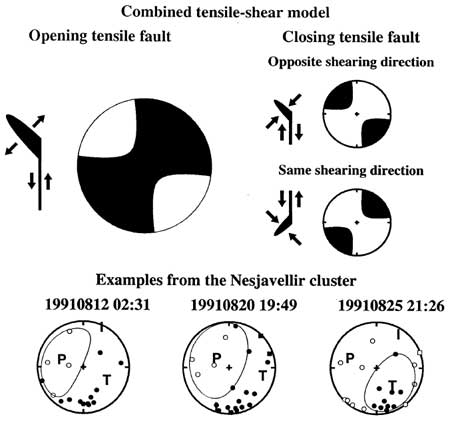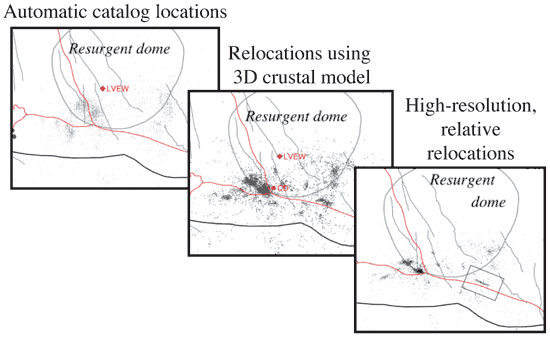Gillian
R. Foulger has 40 years experience in microearthquake (MEQ)
studies in geothermal areas. She worked in Iceland for
five years, pioneering the development of MEQ-based methods
for prospecting and monitoring geothermal reservoirs. She
applied the techniques developed to the Hengill and Krafla
geothermal areas, Iceland (Foulger,
1988a;b; Foulger et al., 1989; Arnott & Foulger,
1994a;b).
Gillian
subsequently added further MEQ-based techniques to her portfolio,
including three- and four-dimensional Vp, Vs and Vp/Vs tomography,
moment tensor analysis, and high-resolution relative MEQ
locations. She applied these techniques to The Geysers, Long
Valley and Coso geothermal areas (Calfornia), and geothermal
and hydrocarbon fields in Indonesia and Papua New Guinea.
Interpretive
work emphasizes cross-disciplinary integration of all geophysical
and geological results available.
Gillian
has authored more than 50 geothermal papers published in
peer-reviewed journals and given more than 70 related conference
presentations.
Example
of a recent project
|
The
Coso producing geothermal area, California |
|
The
Coso geothermal area is utilized to generate ~250 MW of
electricity. Steam removal induces intense microearthquake
activity suitable for advanced analysis techniques that
are powerful to monitor the reservoir and optimize production
strategies. Gillian used the ~80,000-earthquake dataset
currently available for time-dependent seismic tomography,
moment-tensor analysis, and high-resolution relative MEQ
locations.
These
studies yielded a 3-dimensional image of the entire reservoir,
and show changes in reservoir properties with time caused
by production. Fracture enhancement is achieved using hydraulic
stimulation to improve steam recoverability. A unique proof-of-concept
of the moment-tensor technique to image stimulated fractures
and their mode of failure was recently achieved.
This
project was conducted in collaboration with the U.S. Geological
Survey, the U.S. Navy, the Department of Energy and the
University of Utah.
Examples
of recent significant related publications:
-
-
Julian,
B.R., G.R. Foulger, K. Richards-Dinger and F. Monastero, Time-dependent
seismic tomography of the Coso geothermal area, 1996-2004,
extended abstract, Proceedings, Thirty-First Workshop
on Geothermal Reservoir Engineering, Stanford University,
Stanford, California, January 30-February 1, 2006.
-
-
Gillian's
wider expertise embraces general geophysical surveying, including
gravity, magnetics, active seismics and GPS. She has also
conducted pure research into the physics of earthquake sources,
GPS surveying, the structure of the Earth’s mantle
and the origin and existence of hot spots and mantle plumes.
Techniques
Example
of time-dependent three-dimensional tomography

Anomalies
in Vp/Vs at The Geysers in 1991 (left panels),
along with changes during the time periods
specified (other panels), from Gunasekera
et al. (2003).
Back
|
|
Example
of moment tensors

Theoretical
focal hemisphere plots for combined shear
and tensile crack sources, and examples from
the Nesjavellir geothermal field, Iceland,
from Miller
et al. (1998).
Back
|
|
Example
of high-resolution MEQ locations

Example
of MEQs from Long Valley Caldera, California,
showing the improvement in location accuracy
achieved by using a three-dimensional crustal
model, and the high-resolution relative location
technique.
Back
|
|
Example
of Integrated Interpretation

High-resolution
relatively located MEQs line up to dissect
the dilational field of the focal sphere
plot, indicating that the seismically active
lineation must be an opening crack and not
a shear fault. Example from Long Valley Caldera,
California, from Foulger
et al. (2004).
Back
|
|
last
update 10th September, 2018 |
